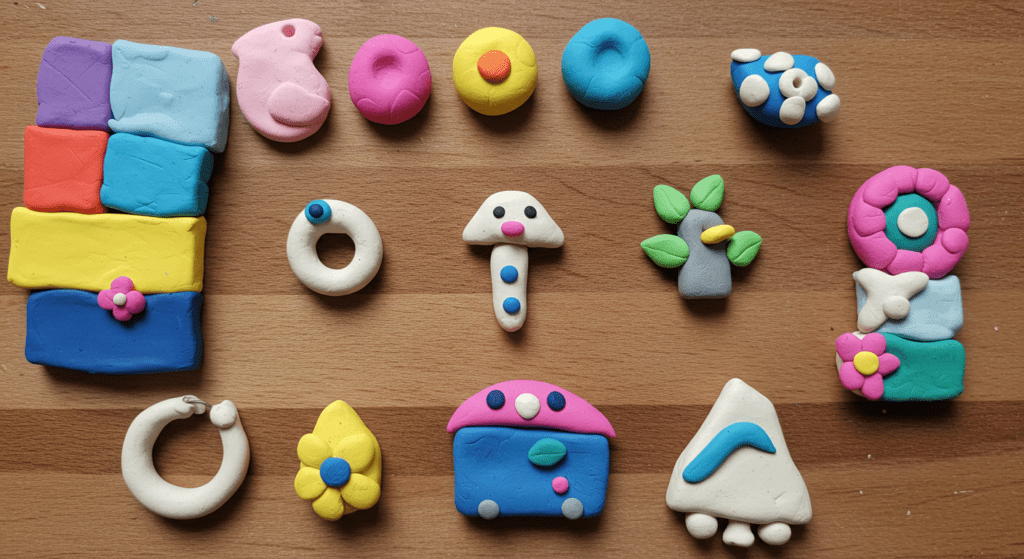Table of Contents
- Introduction
- What is Air Dry Clay?
- Benefits of Using Air Dry Clay
- Essential Tools and Materials
- Step-by-Step Guide to Creating Air Dry Clay Creations
- Tips for Perfecting Your Air Dry Clay Projects
- Common Mistakes to Avoid
- Conclusion
- FAQs
- Tag List
Introduction
Air dry clay has become a popular medium for crafters and artists alike due to its versatility and ease of use. Unlike traditional clay, it doesn’t require a kiln or oven to harden, making it accessible for beginners and professionals. In this guide, we’ll explore everything you need to know about air dry clay creations, from the basics to advanced techniques, ensuring your projects turn out beautifully every time.

What is Air Dry Clay?
Air dry clay is a modeling material that hardens naturally when exposed to air. It’s made from a combination of natural ingredients like clay, glue, and other additives, making it lightweight and easy to work with. It’s available in various colors and can be painted or sealed after drying.
Benefits of Using Air Dry Clay
- No Baking Required: Unlike polymer clay, air dry clay doesn’t need heat to harden.
- Eco-Friendly: It’s often made from natural materials, making it environmentally friendly.
- Versatile: Suitable for a wide range of projects, from sculptures to home decor.
- Kid-Friendly: Safe and easy for children to use.
- Cost-Effective: Affordable compared to other crafting materials.
Essential Tools and Materials
To get started with air dry clay creations, you’ll need the following:
- Air dry clay
- Rolling pin or acrylic roller
- Cutting tools (knife, clay cutters)
- Sculpting tools (needle tools, silicone brushes)
- Sandpaper (for smoothing)
- Acrylic paints and brushes
- Varnish or sealant
Step-by-Step Guide to Creating Air Dry Clay Creations
Step 1: Prepare Your Workspace
Cover your workspace with parchment paper or a silicone mat to prevent sticking.
Step 2: Knead the Clay
Knead the clay to make it soft and pliable. This removes air bubbles and ensures even drying.
Step 3: Shape Your Creation
Use your hands or tools to shape the clay into your desired form. Be creative!
Step 4: Add Details
Use sculpting tools to add textures, patterns, or intricate details.
Step 5: Let It Dry
Place your creation in a cool, dry place. Drying time varies but typically takes 24-48 hours.
Step 6: Sand and Paint
Once dry, sand any rough edges and paint your creation. Seal it with varnish for durability.
Tips for Perfecting Your Air Dry Clay Projects
- Work in Layers: For larger projects, build in layers to prevent cracking.
- Keep It Moist: Cover unused clay with a damp cloth to prevent it from drying out.
- Use Armatures: For complex shapes, use wire or foil as a base.
- Experiment with Textures: Try using household items like lace or leaves to create unique patterns.
Common Mistakes to Avoid
- Rushing the Drying Process: Avoid using heat to speed up drying, as it can cause cracks.
- Ignoring Cracks: Fill cracks with wet clay before the piece fully dries.
- Skipping the Sealant: Always seal your creations to protect them from moisture and damage.
Conclusion
Air dry clay creations offer endless possibilities for artistic expression. Whether you’re a beginner or an experienced crafter, this versatile material allows you to bring your ideas to life with ease. By following the tips and techniques outlined in this guide, you’ll be able to create stunning, durable pieces that showcase your creativity.
FAQs
Q1: Can air dry clay be used for outdoor projects?
A: While air dry clay can be used outdoors, it’s not as durable as other materials. Seal it with a weatherproof varnish for better protection.
Q2: How long does air dry clay take to dry?
A: Drying time depends on the thickness of the project, but it typically takes 24-48 hours.
Q3: Can I paint air dry clay before it dries?
A: It’s best to wait until the clay is fully dry before painting to avoid smudging or cracking.
Q4: Is air dry clay safe for kids?
A: Yes, air dry clay is non-toxic and safe for children to use.
Q5: How do I store unused air dry clay?
A: Wrap it tightly in plastic wrap or store it in an airtight container to prevent drying.